In this review, Dr. Will Dabbs examines the Dead Air Sandman X sound suppressor. How does it perform? That’s something that he really digs into along with an explanation of the technologies used to achieve its high performance. The suppressor was provided to the author for this review.
Reading the literature from the company on the Dead Air Sandman X, it represents the state-of-the-art when it comes to centerfire rifle suppressor technology. According to Dead Air, its design is the end result of a decade of aggressive mechanical evolution — hence the new “X” designation.
In my experience, Dead Air is one of the most innovative and agile suppressor manufacturers in the industry. So, if the Sandman X is the pinnacle of their rarefied suppressor line, I certainly was interested in trying it out.
From its cutting-edge design to its Information Age materials science, everything about the Sandman X is pushed to the very edge of the performance envelope. Sound suppressors for tactical firearms are expected to thrive at temperatures and pressures not typically found outside the space program. The Sandman X appears to be as capable as it gets.
Foundations
I was a mechanical engineer the first of my five careers. Forgive me, but I find this stuff fascinating. While design is a critical aspect of modern sound suppressors, what is just as important is actually what you make it out of.

The diaphanous aluminum sort weigh about nothing, but you have to be careful with them. Titanium versions are markedly tougher for a minimal weight penalty. However, titanium, in addition to being expensive, is notoriously difficult to weld and work.
When you want a hard-use can that is full-auto rated and capable of handling chamberings up to .300 RUM like the Sandman X, you need to think beyond convention. The mad geniuses at Dead Air suppressors settled on a wonder-material called Haynes 282.
Haynes International develops exotic, high-performance alloys that are custom-designed for use in high-temperature applications where resistance to corrosion is a consideration. The company states on its website that “HAYNES® 282® alloy (UNS N07208) is a wrought, gamma-prime strengthened superalloy developed for high temperature structural applications, especially those in aero and industrial gas turbine engines. It possesses a unique combination of creep strength, thermal stability, weldability, and fabricability not found in currently available commercial alloys.”
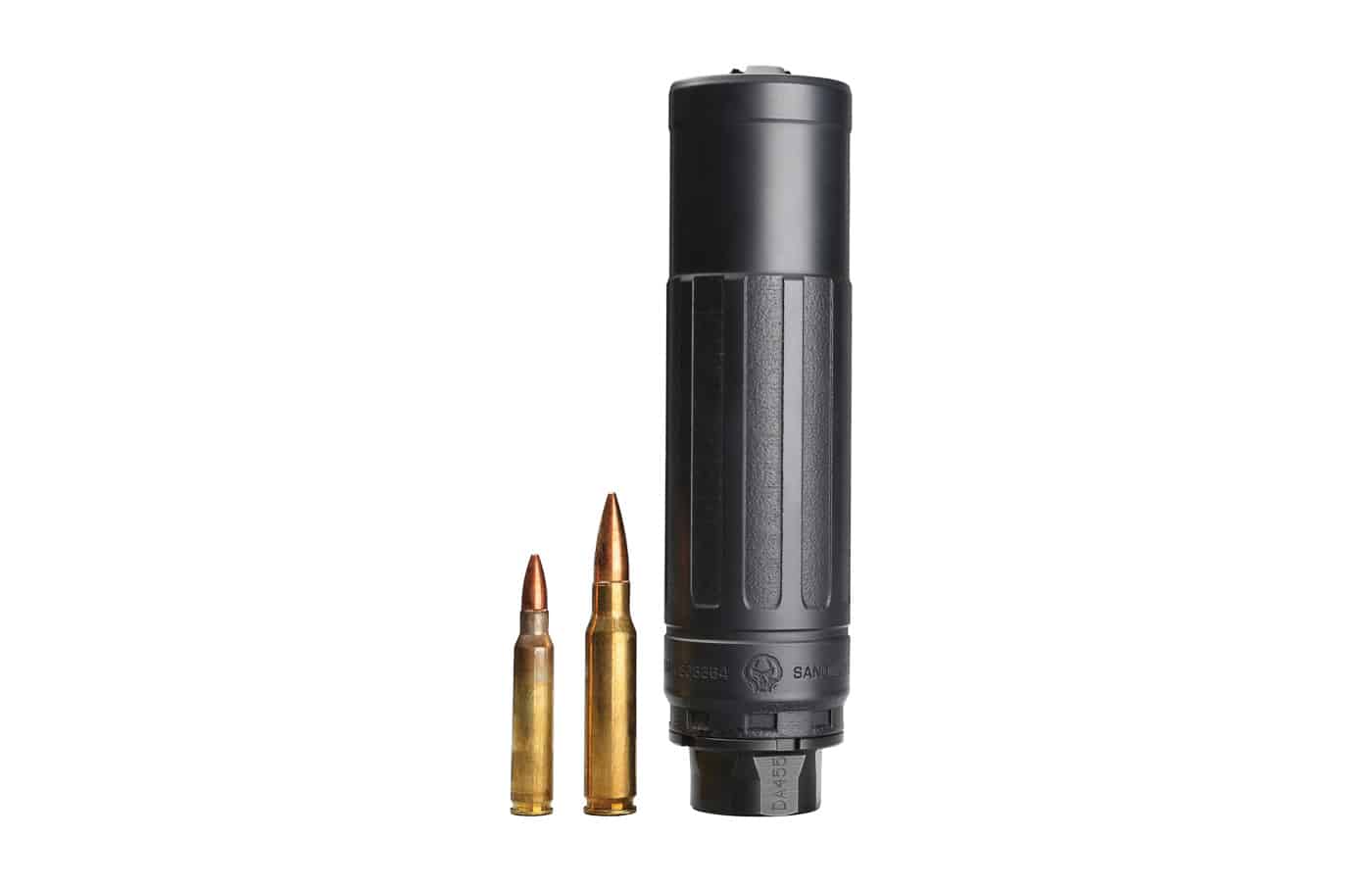
Translating all of that into normal people-speak, Haynes 282 is a nickel-based superalloy comprised of 57% nickel, 19.5% chromium, 10% cobalt, 8.5% molybdenum, 2.1% titanium and 1.5% aluminum. It also contains small amounts of iron, manganese, silicon, carbon and boron. Each component is carefully chosen to provide specific attributes to the whole.
Haynes 282 maintains its strength up to around 1,600°F, making it ideal for hard-use sound suppressors. Get anything hot enough, and it gets soft. By contrast, Haynes 282 exhibits exceptional creep strength. That means it resists deformation even under conditions of high temperature and high stress. Haynes 282 is also highly resistant to thermal cycling. Repeated heating and cooling cycles will reliably destroy lesser materials. Haynes 282 is built to thrive in that space.
Haynes 282 is also relatively easy to weld and cut. Additionally, despite its high-tech parentage, Haynes 282 is not insanely expensive. That ultimately allows Dead Air to keep the price of the Sandman X within reach of the working man.
Lastly, while Haynes 282 offers myriad benefits over more traditional materials when in solid form, it also can be had in a powder. That makes this science fiction-grade material amenable to additive manufacturing/3D printing. As a result, Haynes 282 can be used to create incredibly complex shapes.
The Can
Sound suppressors are designed for lots of different applications. Tiny little rimfire cans are intended for low-volume utility work on relatively anemic firearms. Pistol cans are generally crafted to minimize weight and accept a Nielson Device for reliable functioning. On the other hand, the .30-cal. Sandman X is right at home on anything from your preferred bolt-action as well as your favorite semi-auto rifle. This is the hard-use, general-purpose suppressor that you don’t have to be terribly careful with.
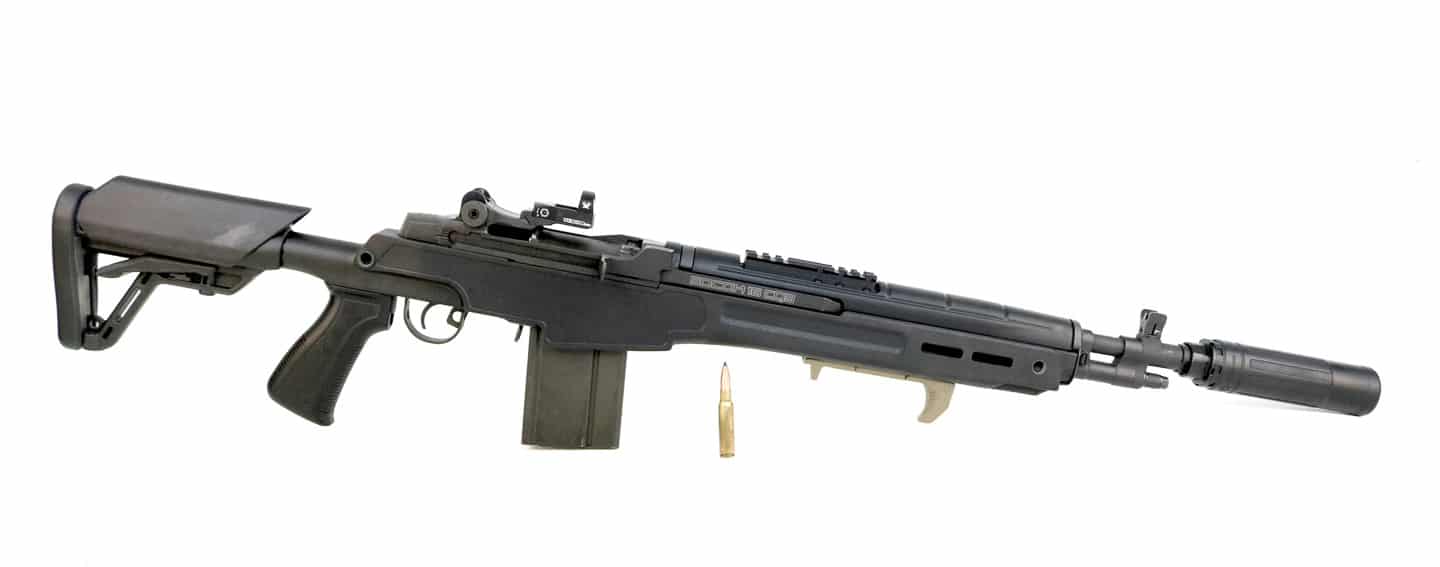
The Sandman X is available in either black or FDE Cerakote. It is also offered with two different mounting systems. The Xeno version weighs 14.5 oz., while the Keymo variant tips the scales at 16.8 oz. Both appear to be essentially unkillable. The overall length is either 6.4” or 6.9” depending upon the mount. The can is 1.65” in diameter. That’s exceptionally compact given this suppressor’s rarefied performance.
Though this is a .30-cal. can, you can run it on most anything that will fit down the bore. While the can is rated up to .300 RUM, .308, 5.56 and 300 BLK are also on the menu. The end-result is a sound suppressor that is tougher than many a host firearm, and extremely adaptable.
Under the Hood…
The Sandman X is 3D-printed from the aforementioned Haynes 282. This allows for a complex, exotic internal architecture that has been optimized for certain specific tasks. Nestled within this high-tech shell are three fairly conventional cone baffles as well as a pair of patent-pending Triskelion baffles. The cumulative result defines the proprietary Triskelion Gas Management System.

The Triskelion Gas Management System offers superlative acoustic performance. Keeping the gun quiet is, after all, the overall point of the exercise. In addition, this unique design also greatly mitigates muzzle flash while effectively dissipating superfluous heat. More importantly, the Triskelion system ameliorates back pressure. This is particularly important in traditional Stoner-inspired direct gas impingement weapons.
Practicalities
Let’s be frank. Standing in one spot in an enclosed space and emptying a magazine from a suppressed conventional AR rifle can seemingly asphyxiate you. That pungent ammonia smell will end up in your clothes, your hair and your nose. I can only imagine what that foul stuff does to our lungs. As a result, running a can that has been specifically designed to channel all that noxious effluvium forward and out not only makes the experience safer, it is also much more comfortable. The Sandman X is custom-designed to keep that nasty stuff off of you.
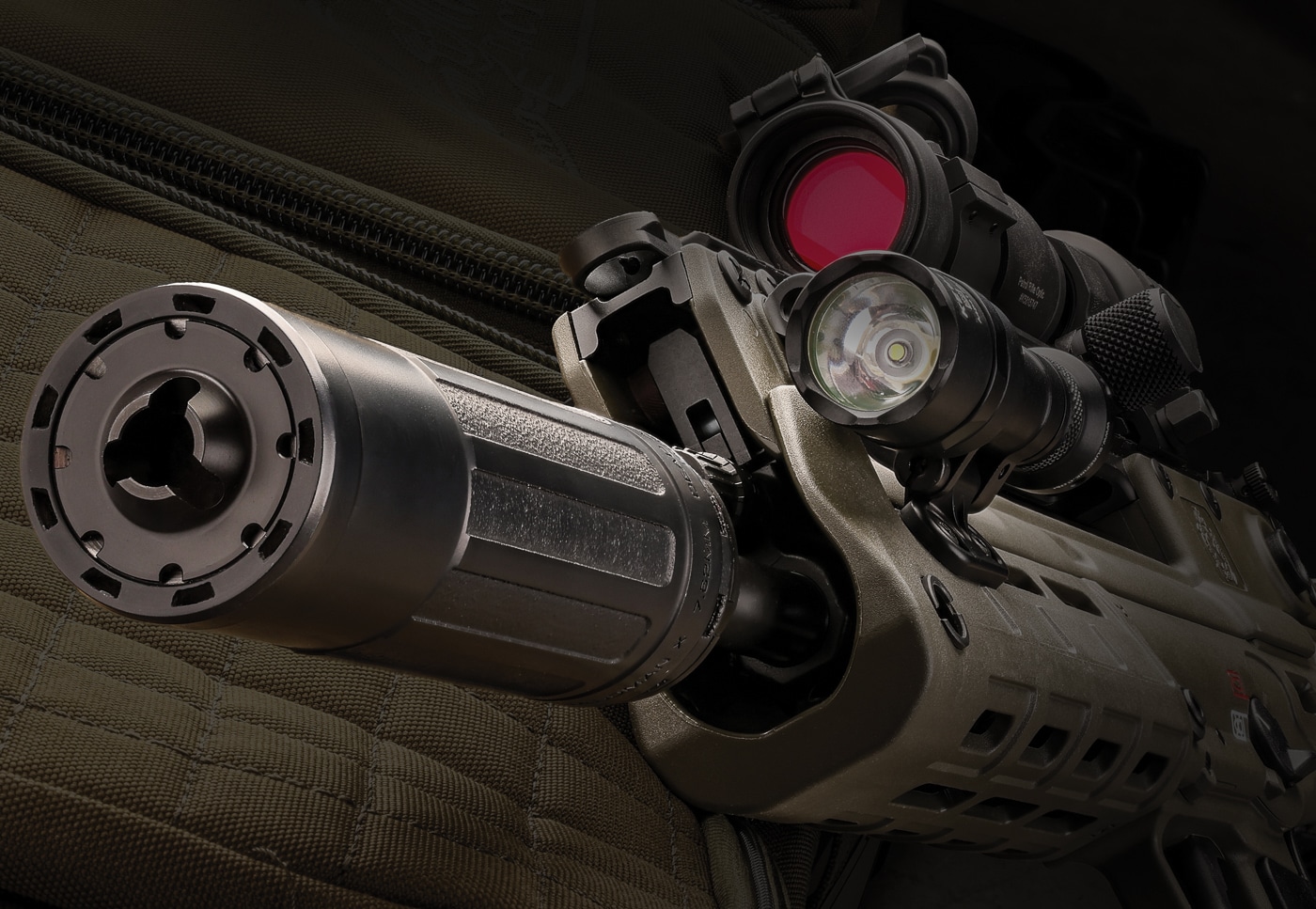
Even if you’re running this can on a piston-driven gun like the Springfield Armory M1A or the Hellion bullpup like I did, venting excess gas forward makes the gun run cleaner. It also doesn’t artificially accelerate the gun’s moving parts. The synergistic result is a gun that will last longer and is easier to maintain.
The Good Host
I wanted to run this beast on both 5.56x45mm and 7.62x51mm firearms. That means the Springfield Armory Hellion bullpup and the SOCOM 16 CQB. Swapping the can between platforms is driven solely by the specific flash hider mount you use. Dead Air will naturally hook you up with anything you might need.
The SOCOM 16 CQB comes with a neat little stubby combination flash suppressor/muzzle brake. However, the thread pitch for this thing is not compatible with the standard 5/8×24 .30-caliber suppressor mount. I scored an inexpensive adaptor online that has held me in good stead for well over a decade. If you can change the batteries in your TV remote, you are overqualified to install this device.

Dead Air flash suppressor mounts are compact and effective. When using the KeyMo mount, you slide the suppressor in place and then turn it to get the can fully seated. The Xeno version simply threads in place. However, the Xeno mounting system uses left-hand threads. That ensures that removing the can is actually tightening the flash suppressor mount. Once you get the flash suppressor mounts sorted on your two host firearms, swapping back and forth is absolutely stupid-proof.
The front cap on the Sandman X includes a built-in flash suppressor. Dead Air recommends you clean the can every 4,000 rounds. Failure to do so isn’t the end of the world. However, it can result in a degradation in acoustic performance and an increase in back pressure.
Trigger Time
We cranked up our range time together with the Springfield Armory Hellion. This 5.56mm bullpup blockbuster is the civilian-legal semi-automatic version of the HS Produkt VHS-2 rifle currently in service with the Croatian armed forces. Springfield Armory engineers helped adapt the design specifically for the U.S. market with additions like a replaceable AR-pattern pistol grip, M-Lok slots and more. The Hellion is a thoroughly modern defensive tool with all the bells and whistles. The chassis is indestructible, and the ergonomics superb. The short-stroke piston-driven action runs clean and is ultra-reliable.
Anything worth shooting is worth shooting twice, and the suppressed Hellion was born to deliver smooth double taps. Recoil is negligible, and follow-up shots flow forth like Rachmaninoff. No kidding, with the Sandman X in place, the Hellion shoots about like a .22 rimfire. What would be ear-splitting without the can is now hugely more civilized.
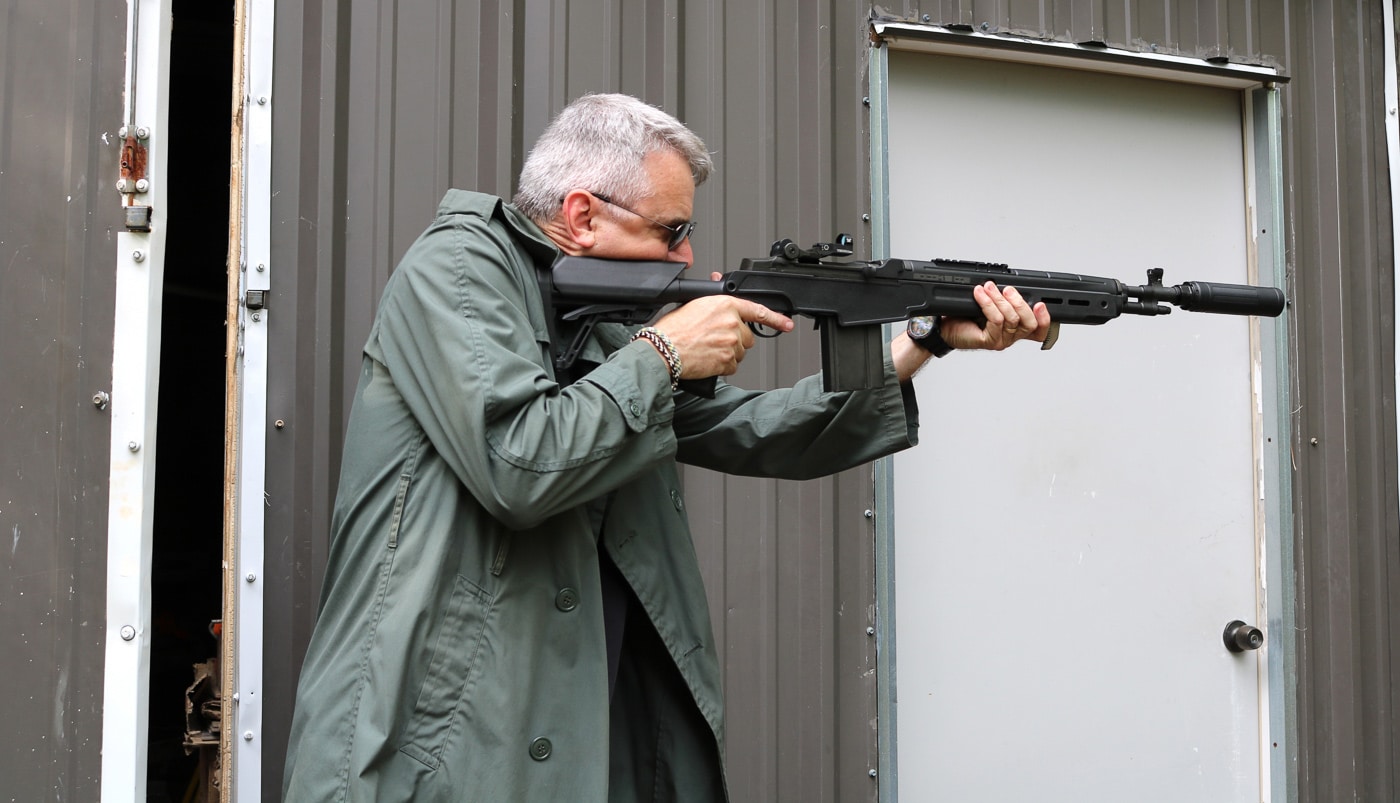
Next, we indexed to the big boy. The SOCOM 16 CQB is a thoroughly modernized version of the classic M14 rifle. This handy 7.62mm features an abbreviated 16” barrel and a high-tech polymer collapsible stock from Archangel. The gun is as reliable as a mother’s love and as mean as a cornered cottonmouth.
Anything that shoots faster than 1,125 fps — the speed of sound in dry air — is going to create a nasty sonic crack no matter what you hang onto the end of the gun. However, the Sandman X gets rid of most of the gun noise with both platforms. Firing a round out over an open space emphasizes the crack. Shooting it into a nearby berm or indoors sounds more like a nail gun.
You can really tell how effective this can is by running a few subsonic 7.62 rounds through it. I load these myself to just barely squeak under the sound barrier. They won’t cycle an autoloading action, but they are, legit, movie-grade quiet through the Sandman X. Through the Sandman X, my subsonic .308 loads project enough horsepower to drop a whitetail while remaining sufficiently quiet as to make a pellet gun seem obnoxious by comparison.
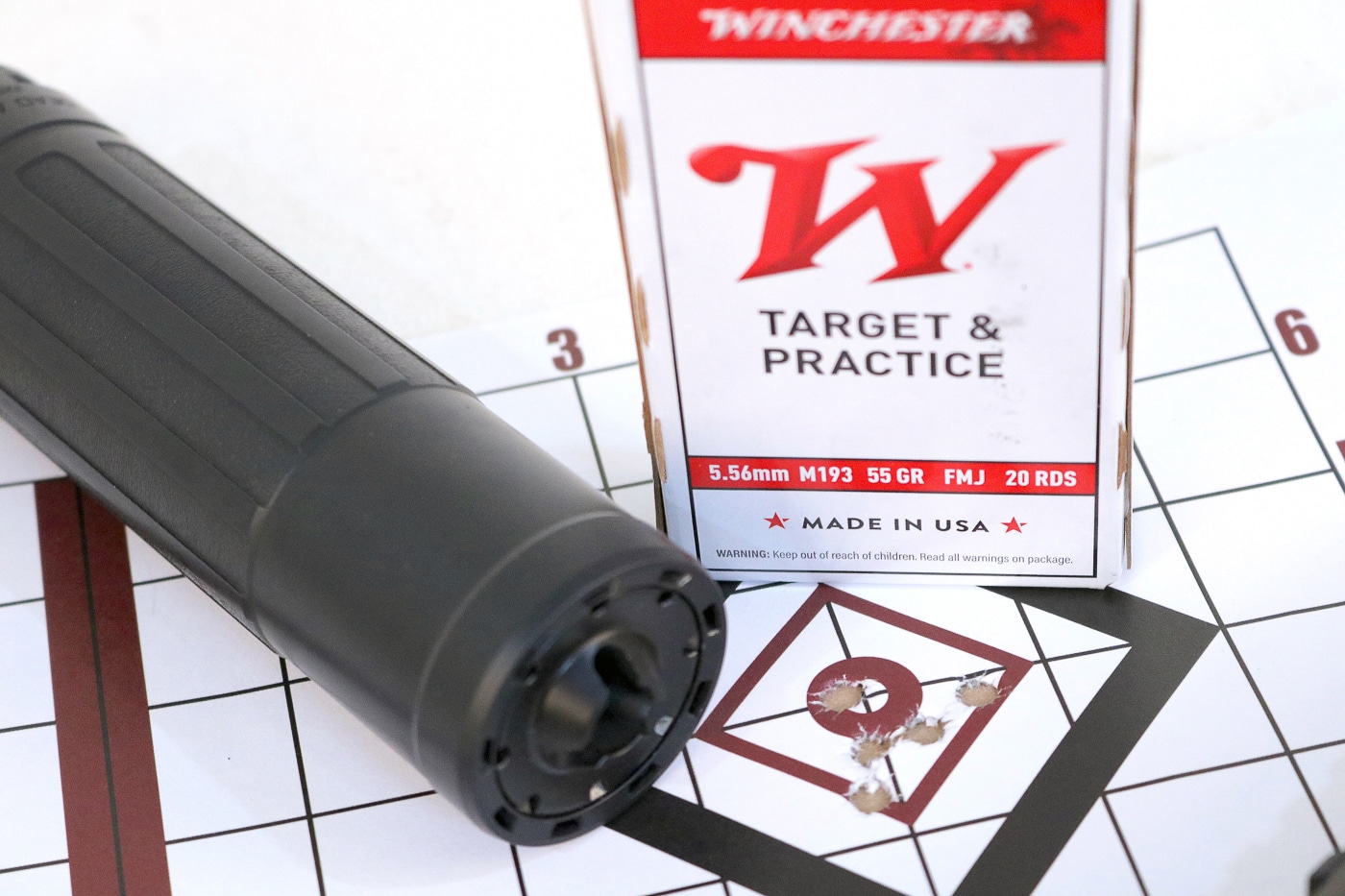
Both guns shot beautifully straight and ran reliably with every factory load I fed them. The addition of the Sandman X makes both of these great guns that much greater. Once you’ve exercised these two superlative rifles with the Sandman X suppressor in place, you will never go back.
Ruminations
There are, at last count, millions of sound suppressors currently in the National Firearms Registry and Transfer Record. The quality of those cans ranges from superlative to garbage, with everything in between.
In my estimation, the Sandman X from Dead Air rests firmly and majestically on the good end. This thing has more refined engineering than the Mars rover and is tougher than woodpecker lips. If you are in the market for a hard-use can that you don’t have to coddle, this is your snuffer. The MSRP is $999 or $1,059 depending upon the mount.
Editor’s Note: Be sure to check out The Armory Life Forum, where you can comment about our daily articles, as well as just talk guns and gear. Click the “Go To Forum Thread” link below to jump in!
Read the full article here





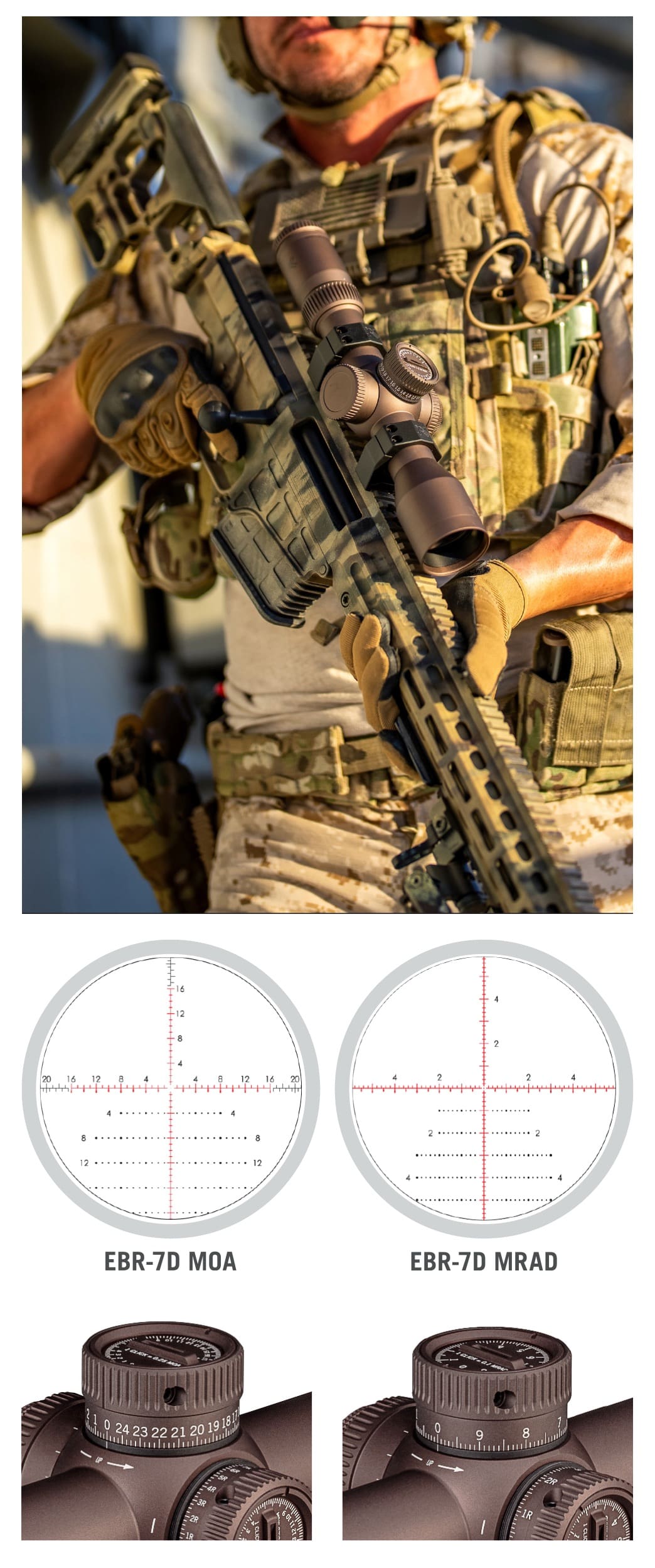


Leave a Reply